9 Types of Pepper Plants to Grow at Home (With Pictures)
-
Codee Chessher
- Last updated:
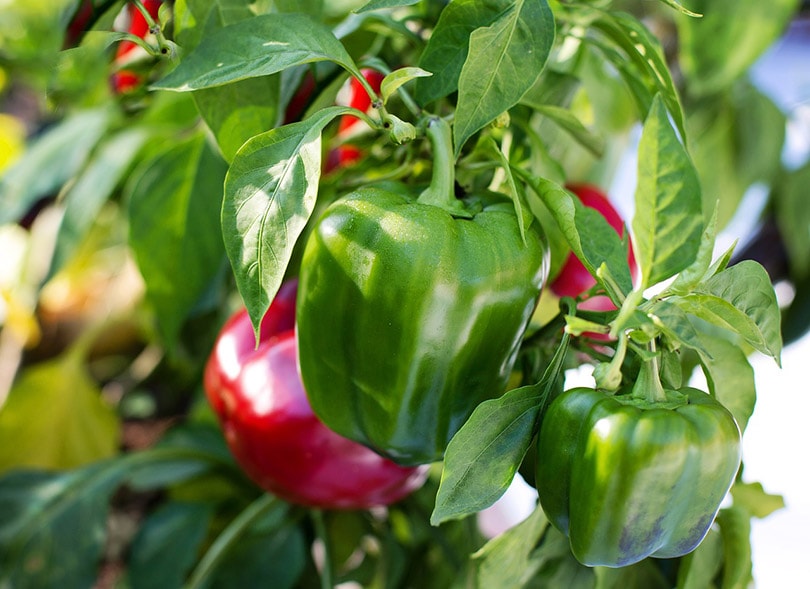
Peppers are one of the most colorful and spicy garden additions you can grow to mix things up. There are mild, unassuming peppers for kids and spice-haters, moderate, and even extremely spicy peppers to satisfy every palate. Let’s check out some of the peppers you can grow at home today.
The 9 Types of Pepper Plants to Grow at Home
1. Poblano Peppers
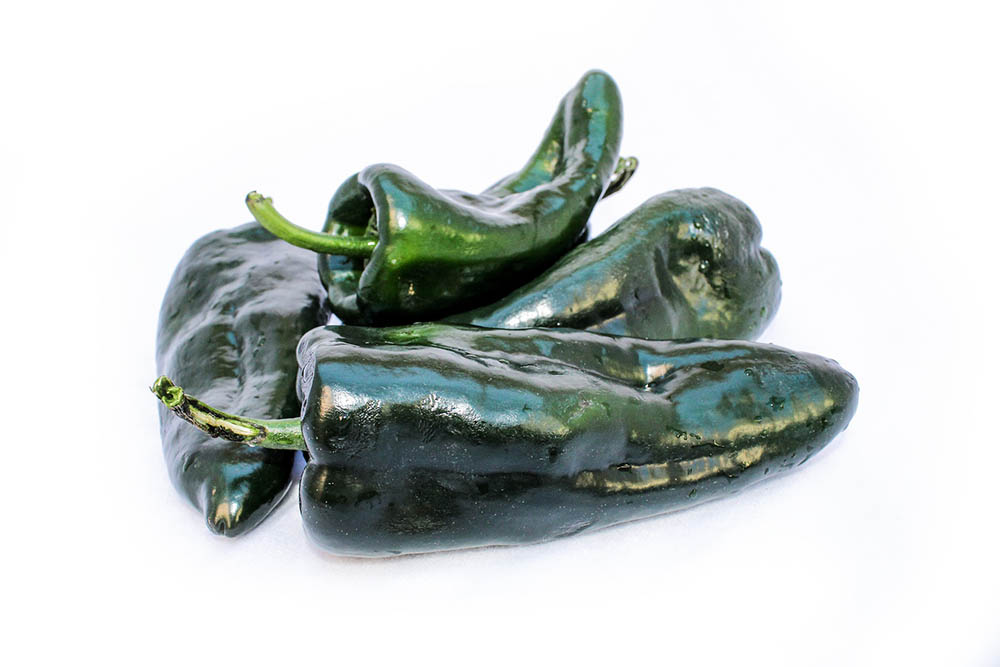
| Height: | 2 feet |
| Scoville heat level: | 1,000–1,500 (mild) |
Poblano peppers are staples in Mexican cuisine, where they’re stuffed, used in mole, and more. They have a mild heat that makes them great ways to spice it up if you’re not too fond of spicy food. The plants themselves are stocky and bushy, and you’ll have to stake the plants so the heavy peppers don’t weigh down the plant and damage its vines.
2. Banana Peppers
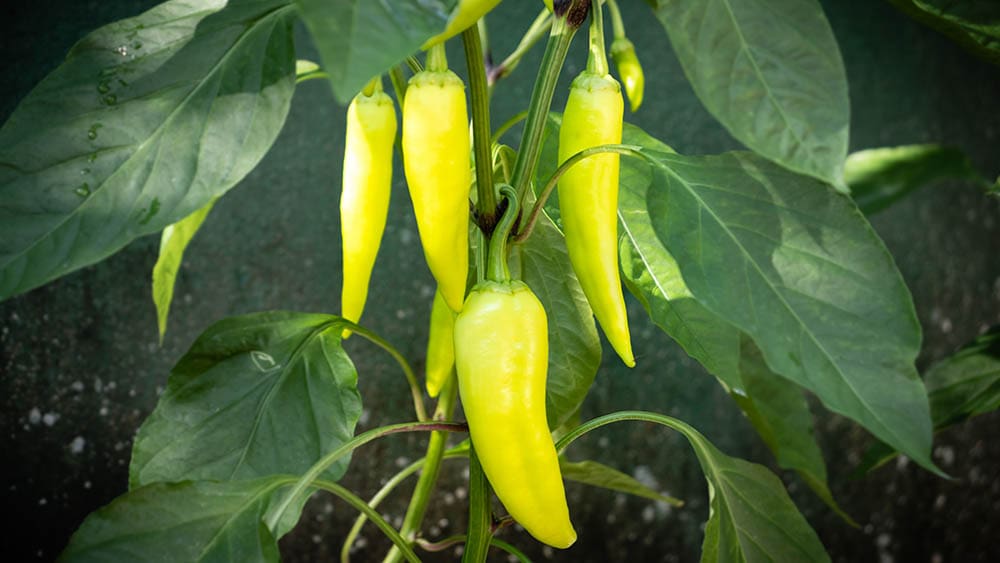
| Height: | 3 feet |
| Scoville heat level: | 500 (very mild) |
Banana peppers are the sweetest of all peppers, but they still pack a bit of heat at 500 Scoville heat units. The peppers are very long and great for pickling, which perfectly complements their sweet flavor. On the vine, banana peppers start a pale yellow and mature to a deep red. Waiting can add a bit of spice, but they’re sweeter when harvested yellow. Given their wide array of uses in the kitchen, banana pepper plants are a must-have for any gardener.
3. Jalapeno Peppers
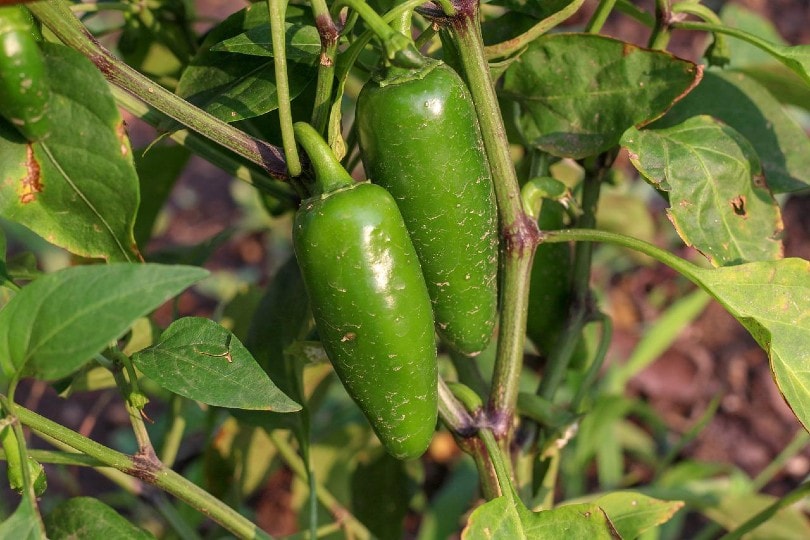
| Height: | 3 feet |
| Scoville heat level: | 2,000–8,000 (moderate) |
Perhaps the most famous spicy pepper, the jalapeno is one of the easiest hot peppers to grow at home. They’re best picked while green because they lose heat when they mature to orange and red. Jalapenos typically yield at 75 days, which is par for a pepper plant. They can be used in sauces, sautéed, grilled, roasted, stuffed, or in numerous other ways.
4. Anaheim Peppers
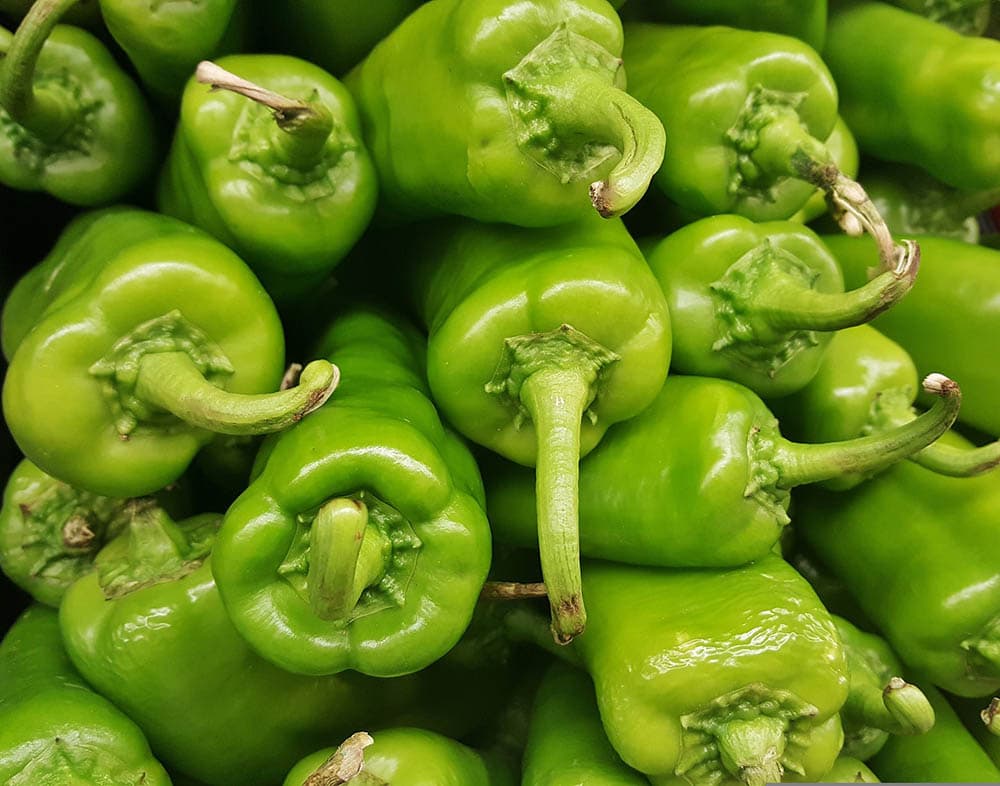
| Height: | 20 inches |
| Scoville heat level: | 500–1,000 (mild) |
Anaheim peppers are commonly confused with jalapenos, but they’re typically not as spicy. Some peppers can get as hot as a jalapeno, but this doesn’t happen often. Anaheim peppers are great for people who want a little bite in their dishes but can’t handle a ton of heat. These are one of the easiest peppers to grow at home yourself, so why not give them a try?
5. Thai Hot Peppers

| Height: | 15 inches |
| Scoville heat level: | 50,000–100,000 (extreme) |
For a burst of intense heat, look no further than Thai hot chili peppers. The plants are very small and even diminutive, but the inch-long green peppers have more heat than 20 jalapenos combined. The plants are very compact and easy to fit into any garden, but don’t dare plant them unless you can handle a lot of spiciness in your diet.
6. Hatch Chile Peppers
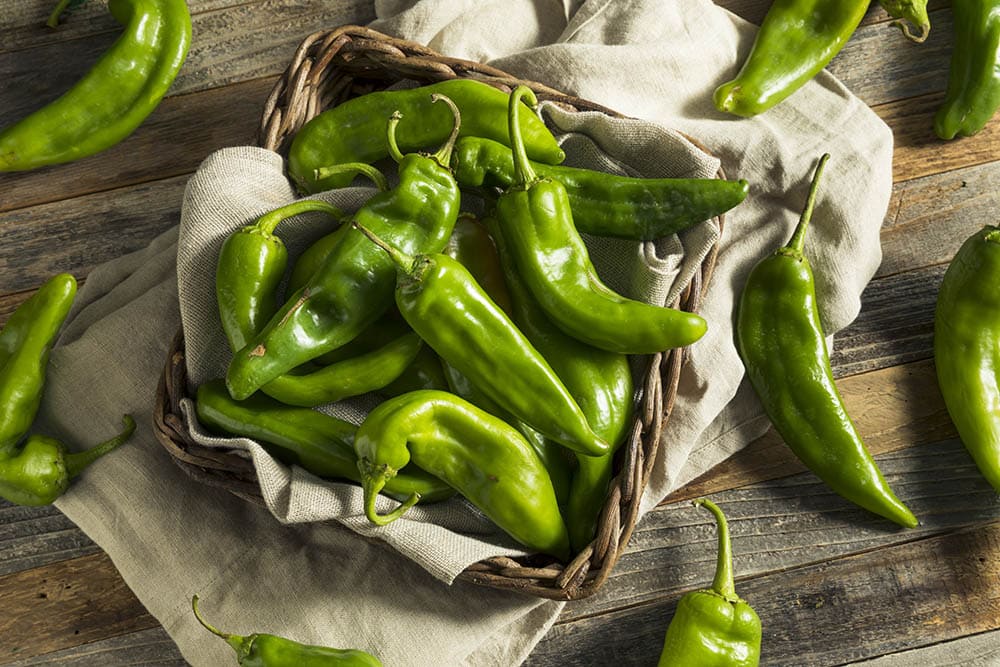
| Height: | 2 feet |
| Scoville heat level: | 1,500–2,500 (mild) |
If you’ve ever been to New Mexico or the Southwestern US, you may have seen the dried chile pepper wreaths, also called ristras. These are made from the hatch chile pepper, which is a catch-all name for peppers grown in the Hatch Valley in New Mexico. These peppers rarely approach hot but have a solid heat that makes them great dried, in soups, or sautéed.
7. Shishito Peppers
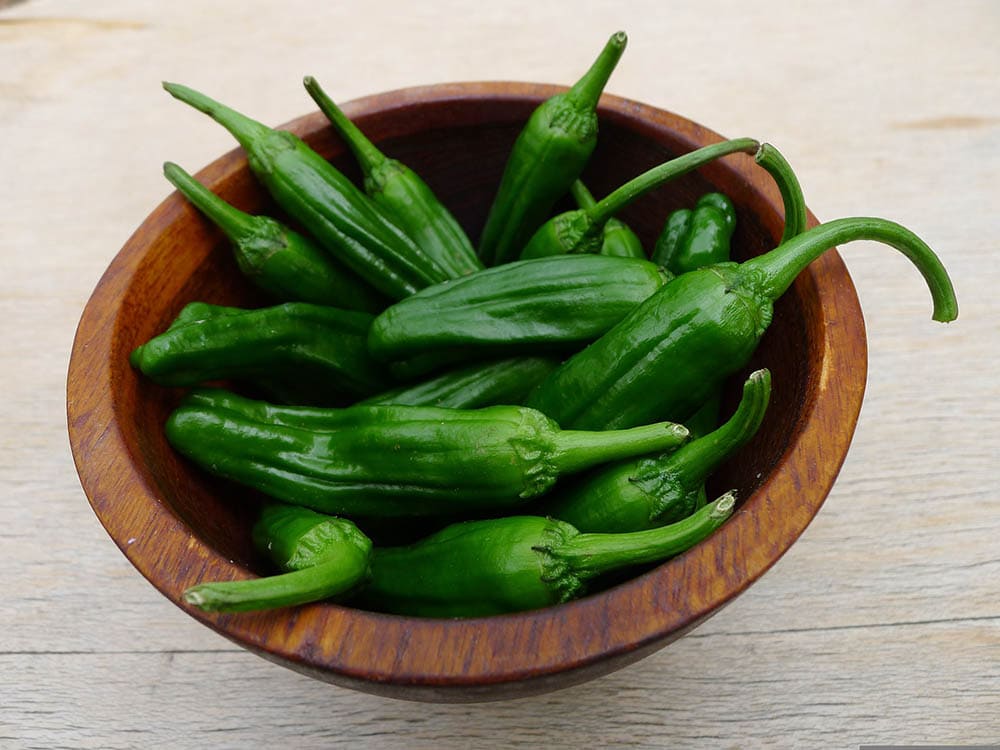
| Height: | 2 feet |
| Scoville heat level: | 100–1,000 (very mild) |
Also called Japanese frying peppers, Shishito peppers are delicious when battered in tempura and fried. Unlike most peppers, Shishito peppers are ready to pick about 60–65 days after transplanting. They have a mild heat that’s hotter than a bell pepper but much milder than a jalapeno. However, some of them have a surprisingly spicy kick.
8. Habanero Peppers
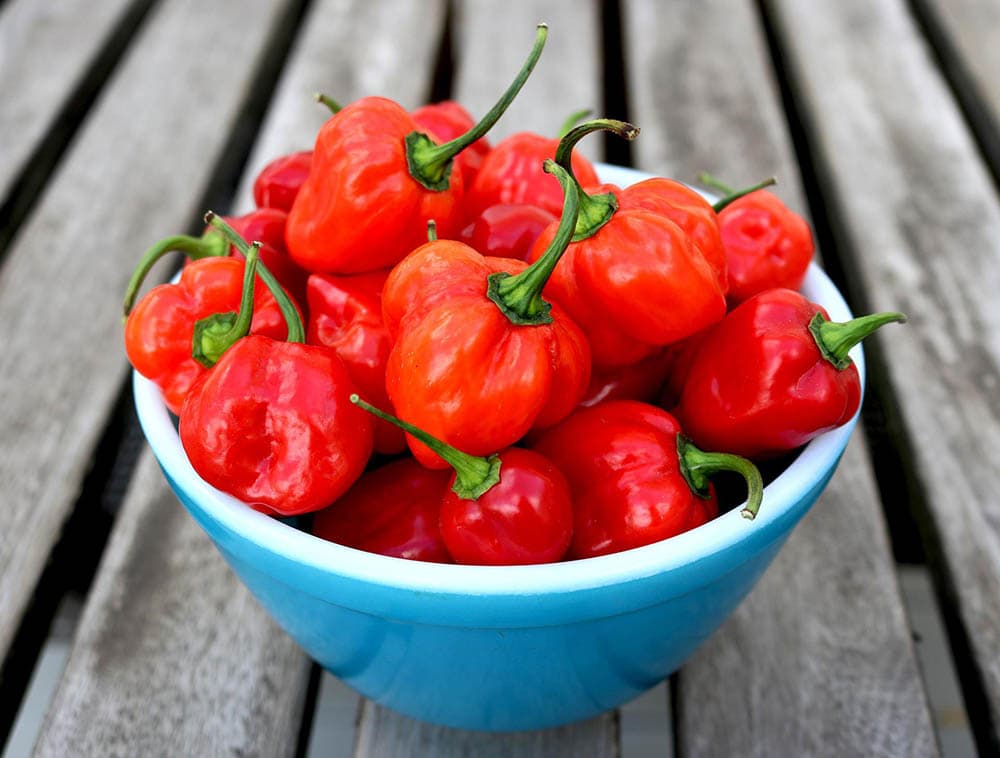
| Height: | 4 feet |
| Scoville heat level: | 100,000–350,000 (extreme) |
For a taste of the ultra-hot, the habanero remains a perennial favorite. It’s great for making fiery sauces, roasted, and sautéing. They take up to 3 months to grow, which is much longer than most peppers. Fresh peppers have a distinctly fruity taste, but that taste goes away after some time. Habanero plants are notoriously tricky to grow, so we’d suggest this one for expert gardeners with a deft green thumb.
9. Bell Peppers

| Height: | 5 feet |
| Scoville heat level: | 0 |
Bell peppers are the mild-mannered cousin of the pepper family, with a delightfully crunchy and sweet taste. They’re fairly easy to grow in the garden, yielding up to 10 peppers per season. The plants grow rather tall, too, so they’ll need a ton of sun to fruit well. Although bell peppers are an honorary member of the pepper family, they’re technically a fruit and don’t have any spice to them.
In Conclusion
Growing peppers can be an awesome way to add some color and spice to your kitchen ingredients. From the mild banana pepper to the ultra-fiery habanero pepper, there’s at least one pepper on this list you’re sure to keep around.
Featured Image Credit: JillWellington, Pixabay
Contents
